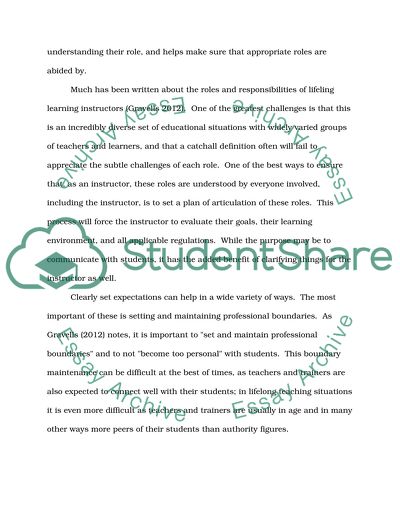Roles, Responsibilities and Relationships in Lifelong Learning Assignment. Retrieved from https://studentshare.org/education/1470580-roles-responsibilities-and-relationships-in
Roles, Responsibilities and Relationships in Lifelong Learning Assignment. https://studentshare.org/education/1470580-roles-responsibilities-and-relationships-in.


